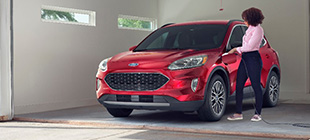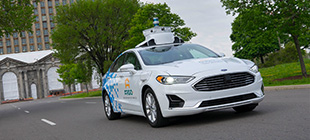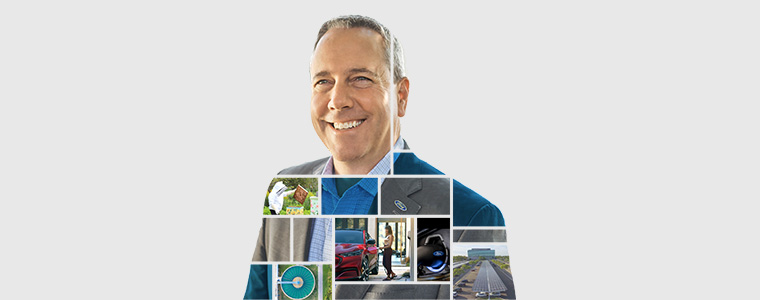What’s on this page
Scaling Up Electrification
As part of our vision of the future, we have committed to offering an electrified vehicle (EV) model for our most popular nameplates, and we’re participating in initiatives to create the largest charging network of any automaker, to make EV ownership more accessible and rewarding.

Our Electrification Strategy
Global demand for cleaner transportation is rising with several countries, including China, India, France and the U.K., announcing plans to phase out vehicles powered solely by combustion engines and fossil fuels by 2040.
In support of that goal, we plan to deliver a portfolio of hybrids, plug-in hybrids and all-electric vehicles to meet our customers’ evolving needs and preferences, focusing on China, Europe and North America. These include the all-new, all-electric Mustang Mach-E and an all-new Lincoln Aviator Plug-In Hybrid.

Making EVs a Commercial Success
Commercial vehicles are a key component of our electrification plans. The all-electric Ford Transit, coming for the 2022 model year, is intended to help lead the transition to carbon neutrality as well as helping businesses improve performance, capability and productivity. In addition to eliminating trips to the gas station, fleet owners will benefit from less scheduled maintenance, lower operating costs and vehicle tax incentives.

For customers who own, or are considering, an electrified vehicle, charging away from home is a main concern. But by offering industry-leading charging access across North America and Europe, we are enabling more customers to confidently enjoy the benefits of owning an electric vehicle.”
Matt stover Director, Charging/Energy Services
Advancing Charging Infrastructure
One of the biggest barriers to customers considering an electric vehicle has been the fear of running out of power or the inability to find a place to plug in. To make charging an effortless experience, we’re offering our all-electric vehicle customers in North America access to the continent’s largest EV public charging network. It offers more than 13,500 places to charge and more than 40,000 charge plugs – more than any other automotive manufacturer.
Through the IONITY consortium, we are also building a network of 400 fast-charging stations in key locations across Europe.
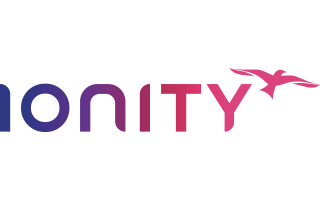
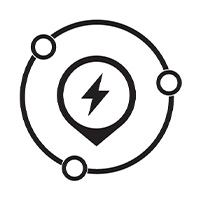
More than $11.5 billion
Investment in EVs through 2022
150,000
Public charging sites across China accessible to Ford owners with FordPass
It’s Electrifying: The Mustang Mach-E
For the first time in more than 50 years, Ford is expanding the Mustang lineup with the all-new, all-electric Mustang Mach-E coming to North America and Europe.
As well as offering high-performance, zero-emission driving, the Mach-E delivers stress-free experiences and total peace of mind thanks to the next-generation SYNC® communications system and the latest connected vehicle technology.


The all-new Mustang Mach-E is the new benchmark for all-electric vehicles. It’s all about guilt-free, zero‑emission driving. It’s a game-changer.”
Ulrich Koesters Director, Electrification Europe
More than 300 miles
Range of Mustang Mach-E on one charge1
61 miles
Average additional range with approx. 10 minutes’ DC Fast Charging with extended range battery and RWD2
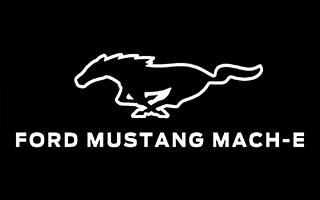
1 Under Environmental Protection Agency (EPA) regulations. Based on a full charge when configured with optional extended range battery and rear wheel drive (RWD). Actual range varies with conditions such as external elements, driving behaviors, vehicle maintenance and lithium-ion battery age. Final EPA-estimated ratings are available in the 2020 calendar year.
2 Range and charge time based on manufacturer computer engineering simulations and EPA-estimated range calculation methodology. The charging rate decreases as battery reaches full capacity. Results may vary based on peak charging times and battery state of charge. Actual vehicle range varies with conditions such as external elements, driving behaviors, vehicle maintenance, lithium-ion battery age and state of health.
Testing Self-Driving Vehicles
Self-driving vehicles have the potential to deliver new levels of accessibility, affordability and convenience, particularly in urban environments. Much of the technology already exists, but before it can be used to improve our lives, we need to build consumer trust in its safety and reliability.

Expanding Our Reach
Working closely with customers, industry and government officials, as well as our technology partner Argo AI, we’ve tested the technology in vehicles on the streets of Miami-Dade County, Florida; Washington, D.C.; Detroit, Michigan; Palo Alto, California; and Pittsburgh, Pennsylvania. Building our knowledge of how it responds to specific municipal environments, we’ve launched another test fleet in Austin, Texas.
Each new location represents a unique opportunity to expose our technology to different road infrastructure design, driving behavior and even traffic light placement.

Technology Partnerships
In 2019, we expanded our global alliance with Volkswagen to introduce self-driving vehicle systems across the United States and Europe, in collaboration with our technology partner Argo AI.
The acquisition of Michigan-based Quantum Signal in July 2019 further supports software development and hardware prototyping as we strive to develop self-driving transportation services.
Tackling Mobility Challenges
We are leading efforts to create safer, more efficient and sustainable transportation networks with a wide range of mobility options. By coordinating all forms of transportation in our growing cities, we hope to improve everything from traffic flow to parking.
Our Aspirational Goal
We aspire to drive human progress by providing mobility and accessibility for all.

A Connected Future
To provide new mobility services that improve people’s lives, it’s essential for vehicles to communicate with the city around them, including the road itself. The Transportation Mobility Cloud is the first open cloud-based platform that connects the diverse components of urban mobility systems, including connected vehicles, mass transit, pedestrians, city infrastructure and service providers – with the goal of orchestrating a safer, more efficient and sustainable transportation network.
Enabled through cellular vehicle-to-everything technology (C-V2X), new vehicles will soon be able to “talk” and “listen” to other vehicles and road infrastructure such as traffic lights, helping to make our streets safer and less congested. We plan to deploy C-V2X in China in 2021 and in all new U.S. vehicle models from 2022, and hope others will join us in unleashing its potential.


Nobody can predict the future, but I believe that some of us can create it. And you can only do that if you have meaningful, purposeful conversations about what sort of future is most beneficial to you or your organization.”
Sheryl Connelly Chief Futurist
A Quantum Leap in Efficient Routing
Through smart navigation, we’re exploring the potential to optimize route suggestions for all vehicles that share the same roads. To do this, we need quantum computing power, which is where our partnership with Microsoft comes in. Through this joint research pilot, scientists have simulated thousands of vehicles requesting identical routes across Seattle, Washington. When compared to “selfish” routing, balanced routing suggestions reduced congestion and commuting time. With promising results, we’re expanding our partnership to test more real-world scenarios.
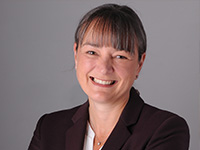
What an exciting time to be at such an iconic company! In Europe, we are focusing our Mobility efforts on enabling our commercial customers to move and work in cities in a sustainable way. We are actively running pilots with our customers on last-mile deliveries, parking and sharing commercial vehicle data with city stakeholders. The team are proud to be helping to define freedom of movement for the next century, by imagining, designing and creating solutions with our customers at the center of everything we do.”
Sarah-Jayne Williams Director, Smart Mobility EU
City Solutions
We’re working to help cities understand their transportation needs and explore how new technology and data can support better urban mobility for all.
This aim lies behind Ford’s acquisition of San Francisco-based electric scooter company Spin in late 2018, meeting a need for convenient, cost-effective micro-mobility for those first and last miles of a journey. Already collaborating with cities and universities around the United States to offer an affordable, reliable and sustainable alternative for short trips, the service is coming to Europe shortly. A fleet of dockless scooters is destined for Cologne, Germany, and other cities in the country will follow.
Crowdsourcing City-Specific Solutions
The City:One Challenge provides a platform for city officials, companies and communities to connect and collaborate on projects that improve local mobility and accessibility, one solution at a time. Having supported pilot projects in Miami, Florida; Pittsburgh, Pennsylvania; and Grand Rapids, Michigan, in 2018, we are focused on meeting local mobility needs in four new locations in 2019: Indianapolis, Indiana; Austin, Texas; and Mexico City, and the redevelopment of Michigan Central Station in Detroit. The latest winners have now received their funding.
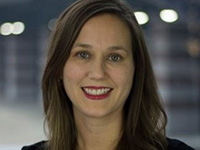
Through the City:One Challenge, we aim to elevate community voices as they understand firsthand the challenges to moving around. When we listen to multiple points of view from the community and work with them on mobility design, we help create a stronger foundation for building mobility solutions with impact that can be relevant to everyone.”
Gina Schrader Co-founder and Operations Lead, City Innovations, Ford Mobility

Delivering the Final Step With Agility Robotics
Continuing our existing partnership with Agility Robotics, Ford has acquired two upright, walking “Digit” robots to explore how commercial vehicle customers can make warehousing and deliveries more efficient and affordable. When it reaches its destination, Digit can take a package and complete the final steps in the delivery process “on foot.”
Ensuring Data Privacy and Security
We take our responsibilities concerning the privacy and security of all customer information seriously, and have policies and directives in place that focus on transparency and responsible data handling.
The data we harness from connected vehicles helps us understand and anticipate consumer behavior, and accelerates the development of innovations to improve people’s lives. For example, our Safety Insights tool combines publicly available crash data with information from Ford vehicles, and simulates the potential benefits of various interventions at specific road sections and junctions.
Safety Insights
The Safety Insights simulation tool combines publicly available crash data with information from Ford’s connected vehicles to give city planners a fuller picture of road safety. The web-based platform shows traffic flow patterns, crash data and connected vehicle events at specific road sections and junctions, and simulates the potential benefits of different interventions.
After launching a beta version in November 2019, traffic safety professionals from more than 10 public agencies are already using the tool.


Improving the Customer Experience
We’re listening to our customers to ensure that each interaction we have with them is tailored to their lifestyles, exceeds their expectations and builds long-term satisfaction.
Our efforts to improve every experience include the FordPass App, which allows customers to receive personalized information, monitor their vehicle, get maintenance reminders and make service appointments; a new “own the contact” model in our Houston, Texas, contact center; “transparent” workshops in China to enable customers to follow their vehicles through a service; and hundreds of new Ford Signature dealerships with a fresh look, greater transparency and an improved experience.
Furthermore, we’ve established human-centered design centers – D-Ford labs – in Detroit, Michigan; London; Palo Alto, California; London, England; and Shanghai, China, to harness our best ideas and use them to better understand customers.
Lending a Hand During the COVID-19 Crisis
To help those financially impacted by the outbreak, Ford Credit has offered customers six months of payment relief – three payments by Ford and three deferred payments – through the Built to Lend a Hand program.
Our dealerships now employ a No Touch service program that includes remote pickup and delivery, and vehicle disinfection, for added peace of mind.
We also continue to expand our mobile maintenance pilot program, which brings Ford-quality tools and technicians out to retail and commercial fleet customers in the U.K., the United States and Argentina. Their most important work involves keeping first responders and other critical support vehicles on the road during the COVID-19 crisis.


We are just as passionate about customer experience as we are about our vehicles. It’s about being there for our customers as they use our products and services, and earning their trust at each step along their journey. Our goal is to create customer advocates by delivering owner and user experiences with honesty, expertise and care.”
Jorge Vivas Director, Global Customer Experience Strategy
Sustainable Development Goals
Through our work creating tomorrow’s mobility, we are contributing to the following UN SDGs:
